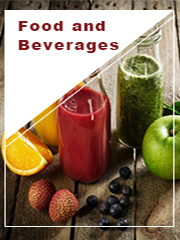Report overview
The gluten free food market has risen from strength to strength riding on the back of the soaring popularity of the food type to combat gluten sensitivity in worldwide population. World over, the proliferating demand for gluten free foods among people with celiac diseases has provided a firm base for the market to evolve. The various digestive benefits gluten free food possesses, along with the beneficial effect on intestinal health, has made the food popular in treating a range of metabolic disorders in worldwide population. The rising preference of gluten free food has in recent years created new revenue streams for food and beverage manufacturers. Several food producers have made a foray into the market with unique positioning strategies to reap the gains.
This report aims to provide a comprehensive presentation of the global market for Gluten-Free Food, with both quantitative and qualitative analysis, to help readers develop business/growth strategies, assess the market competitive situation, analyze their position in the current marketplace, and make informed business decisions regarding Gluten-Free Food. This report contains market size and forecasts of Gluten-Free Food in global, including the following market information:
Global Gluten-Free Food Market Revenue, 2018-2023, 2024-2029, ($ millions)
Global Gluten-Free Food Market Sales, 2018-2023, 2024-2029, (K MT)
Global top five Gluten-Free Food companies in 2022 (%)
The global Gluten-Free Food market was valued at US$ 8774.5 million in 2022 and is projected to reach US$ 14600 million by 2029, at a CAGR of 7.5% during the forecast period. The influence of COVID-19 and the Russia-Ukraine War were considered while estimating market sizes.
Owing to the concerted efforts of healthcare units, health awareness campaigns, and easy access to information, people have become inclined towards consuming healthy foods. Gluten-free food serves a variety of health benefits such as lowering cholesterol levels in the body, and this is expected to create tremendous demand within the global market. Furthermore, gluten free food is less fattening, and hence, it is recommended for individuals who want to lose weight or cut down fats. Besides this, gluten free food is extremely useful for people suffering from digestive disorders. Owing to the aforementioned factors, it is safe to project that the global market for gluten free food would trace an upward graph of growth over the coming years.
We surveyed the Gluten-Free Food manufacturers, suppliers, distributors and industry experts on this industry, involving the sales, revenue, demand, price change, product type, recent development and plan, industry trends, drivers, challenges, obstacles, and potential risks.
Total Market by Segment:
Global Gluten-Free Food Market, by Type, 2018-2023, 2024-2029 ($ Millions) & (K MT)
Global Gluten-Free Food Market Segment Percentages, by Type, 2022 (%)
Gluten Free Bakery Products
Gluten Free Baby Food
Gluten Free Pasta
Gluten Free Ready Meals
Global Gluten-Free Food Market, by Application, 2018-2023, 2024-2029 ($ Millions) & (K MT)
Global Gluten-Free Food Market Segment Percentages, by Application, 2022 (%)
Online Retail
Offline Retail
Global Gluten-Free Food Market, By Region and Country, 2018-2023, 2024-2029 ($ Millions) & (K MT)
Global Gluten-Free Food Market Segment Percentages, By Region and Country, 2022 (%)
North America
US
Canada
Mexico
Europe
Germany
France
U.K.
Italy
Russia
Nordic Countries
Benelux
Rest of Europe
Asia
China
Japan
South Korea
Southeast Asia
India
Rest of Asia
South America
Brazil
Argentina
Rest of South America
Middle East & Africa
Turkey
Israel
Saudi Arabia
UAE
Rest of Middle East & Africa
Competitor Analysis
The report also provides analysis of leading market participants including:
Key companies Gluten-Free Food revenues in global market, 2018-2023 (Estimated), ($ millions)
Key companies Gluten-Free Food revenues share in global market, 2022 (%)
Key companies Gluten-Free Food sales in global market, 2018-2023 (Estimated), (K MT)
Key companies Gluten-Free Food sales share in global market, 2022 (%)
Further, the report presents profiles of competitors in the market, key players include:
Boulder Brands
Hain Celestial Group
General Mills
Kellogg's Company
The Kraft Heinz Company
Glutamel
Schar
Big Oz Industries
Outline of Major Chapters:
Chapter 1: Introduces the definition of Gluten-Free Food, market overview.
Chapter 2: Global Gluten-Free Food market size in revenue and volume.
Chapter 3: Detailed analysis of Gluten-Free Food manufacturers competitive landscape, price, sales and revenue market share, latest development plan, merger, and acquisition information, etc.
Chapter 4: Provides the analysis of various market segments by type, covering the market size and development potential of each market segment, to help readers find the blue ocean market in different market segments.
Chapter 5: Provides the analysis of various market segments by application, covering the market size and development potential of each market segment, to help readers find the blue ocean market in different downstream markets.
Chapter 6: Sales of Gluten-Free Food in regional level and country level. It provides a quantitative analysis of the market size and development potential of each region and its main countries and introduces the market development, future development prospects, market space of each country in the world.
Chapter 7: Provides profiles of key players, introducing the basic situation of the main companies in the market in detail, including product sales, revenue, price, gross margin, product introduction, recent development, etc.
Chapter 8: Global Gluten-Free Food capacity by region & country.
Chapter 9: Introduces the market dynamics, latest developments of the market, the driving factors and restrictive factors of the market, the challenges and risks faced by manufacturers in the industry, and the analysis of relevant policies in the industry.
Chapter 10: Analysis of industrial chain, including the upstream and downstream of the industry.
Chapter 11: The main points and conclusions of the report.
